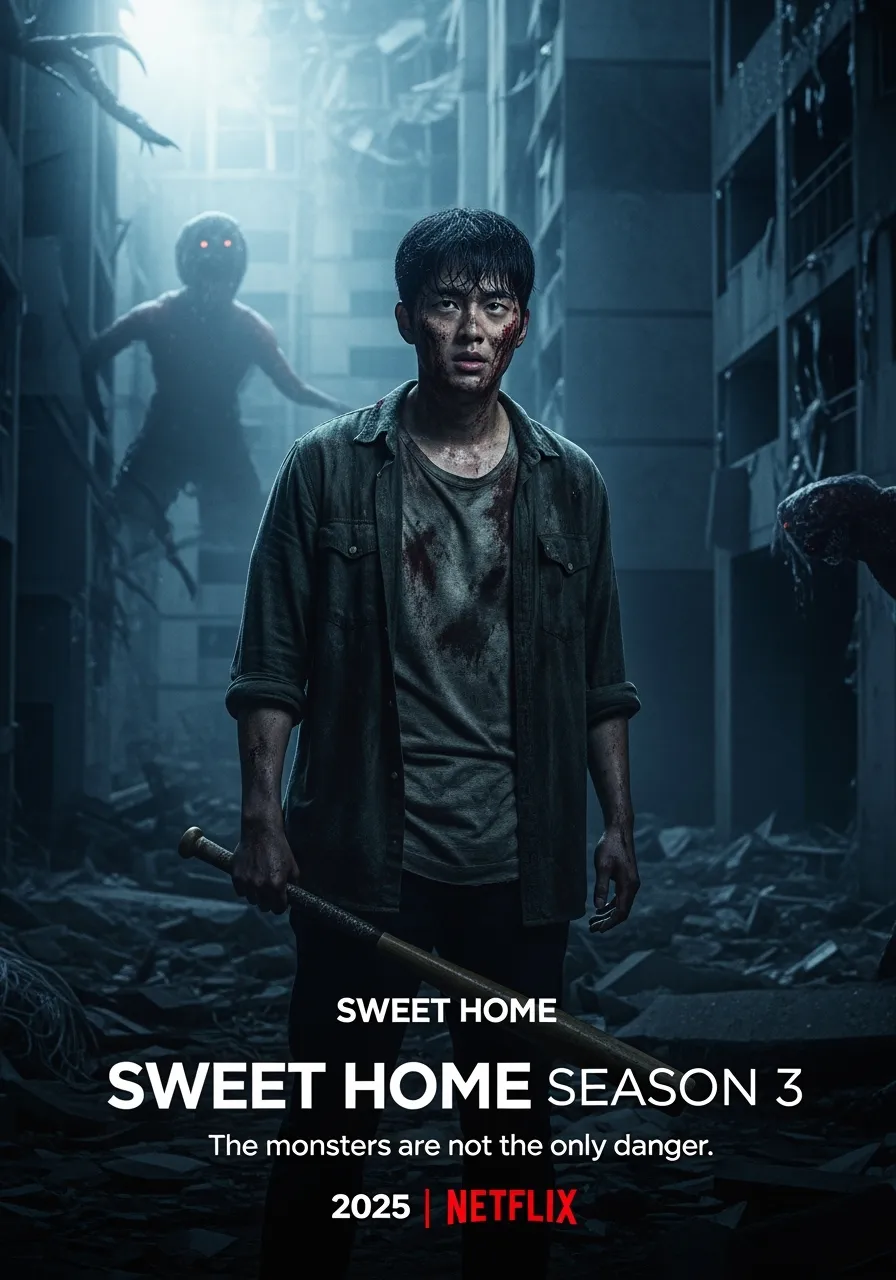I. PLOT OVERVIEW
In Alice in Borderland – Season 3 (2025), the stakes have never been higher, and the games have never been more dangerous. Picking up after the mind-bending twists of Season 2, the new season plunges Arisu (Kento Yamazaki) and Usagi (Tao Tsuchiya) back into the cruel and unforgiving Borderland. But this time, the rules are different. The world they once navigated has shifted—more complex, more distorted, and more psychologically terrifying than ever before.
Gone are the straightforward challenges of survival. Instead, the games now serve as mindscrambling trials that force the players to question not just their ability to win, but their grip on reality. As new face cards are dealt, the contestants find themselves forced into situations where each choice is amplified to an existential level, pushing them further into a corner where survival seems like a mere illusion.
The central question in Season 3 is not just who survives, but who controls the Borderland—and for what purpose. As Arisu and Usagi fight through game after game, the true nature of the Borderland begins to unravel, revealing a web of manipulation that challenges everything they’ve fought for.
II. THEMES & EXISTENTIAL DREAD
Season 3 dives deeper into the philosophical underpinnings of the series, exploring themes of control, freedom, and the collapse of reality. The Borderland is no longer just a deadly game of survival; it’s an experiment—one that distorts the nature of free will and forces the players to confront the darkness within themselves.
The psychological stakes are raised significantly, as the games become less about physical survival and more about mental endurance. Each game now functions as a mirror to the inner conflicts of the participants. The line between logic and madness becomes increasingly blurred, and viewers are forced to ask: Is there any true escape from a system that is designed to break you?

In this season, the characters’ emotional scars—both from the games and their past lives—take center stage. The intense psychological toll is laid bare, making survival seem like a fleeting concept rather than a goal. The season raises the haunting question: What if staying alive isn't the answer? What if survival is the trap?
III. CHARACTER EVOLUTION AND PERFORMANCE
Kento Yamazaki and Tao Tsuchiya reprise their roles as Arisu and Usagi, but the stakes for them have shifted dramatically. Arisu, once a reluctant player with a knack for solving puzzles, is now a man who has witnessed the true depth of human depravity and the fragility of his own spirit. Yamazaki delivers a powerful performance, showing the cracks in Arisu’s psyche as he grapples with the weight of his survival and the unknown horrors ahead.

Usagi, too, has evolved. Once driven by physical skill and endurance, she now faces deeper psychological hurdles as the games test not just her physical limits but her moral compass. Tsuchiya brings a raw intensity to her portrayal, highlighting the emotional and mental strain that Usagi endures as the games grow more distorted.
New characters introduced in this season play pivotal roles in furthering the mystery of the Borderland. These characters add layers to the evolving narrative, serving as both antagonists and victims in the increasingly twisted world. The performances here are stellar, each actor delivering performances that oscillate between desperation, rage, and philosophical resignation.
IV. CINEMATOGRAPHY & DIRECTION
The visual language of Alice in Borderland has always been one of its strongest assets, and Season 3 amplifies this to haunting levels. Director Shinsuke Sato continues his use of high-concept cinematography that emphasizes the disorienting nature of the games. The scenes are often shot in wide angles, showing the immense, sterile, and oppressive environments of the Borderland. Every space is claustrophobic, every scene feels like it’s closing in on the characters, reflecting their inner turmoil.

The games themselves are more elaborate, more visually arresting, and more creatively disturbing than ever before. The design of each challenge feels less like a game and more like a twisted artistic installation—chaotic, abstract, and filled with symbolism. The color palette plays a key role in emphasizing the stark contrast between the survivors' bleak reality and the warped version of the world they are forced to navigate.
The soundtrack complements the visual intensity, using dissonant, pulse-driven music that enhances the mounting tension. The soundtrack, along with the sound design, crafts an immersive atmosphere of dread and inevitability.
V. FINAL VERDICT
Alice in Borderland – Season 3 is a tour de force in psychological horror and existential drama. It retains the high-octane suspense that fans have come to love, but it evolves into something darker and more introspective, elevating the series from a simple survival game to a philosophical journey into the nature of human will and morality.

With twisted new games, elevated emotional stakes, and a haunting atmosphere, Season 3 blurs the line between horror and mind-bending thriller, all while maintaining the heart of the story: survival. But in this new world, survival is no longer a victory—it’s a question, a trap, and a test of what remains of the human spirit.
Rating: 9/10
A thrilling, disturbing, and deeply philosophical evolution of Alice in Borderland, Season 3 redefines the stakes and pushes the boundaries of the genre.
-1752122619-q80.webp)
-1740282288-q80.webp)


-1747716802-q80.webp)